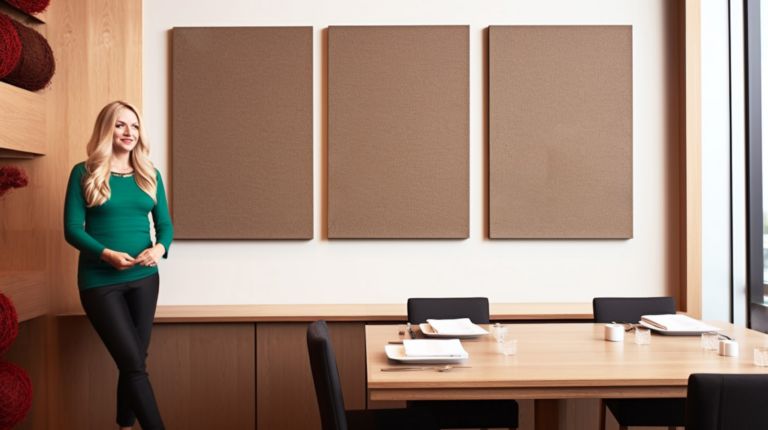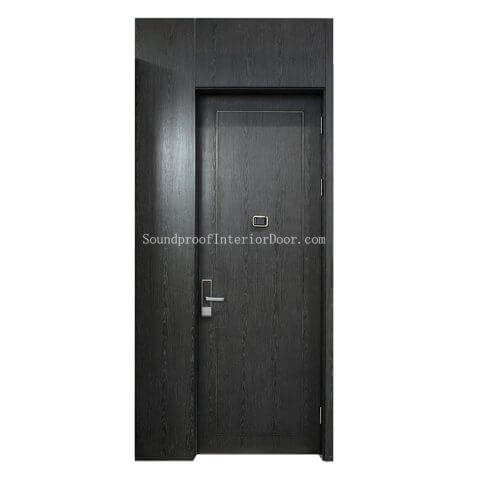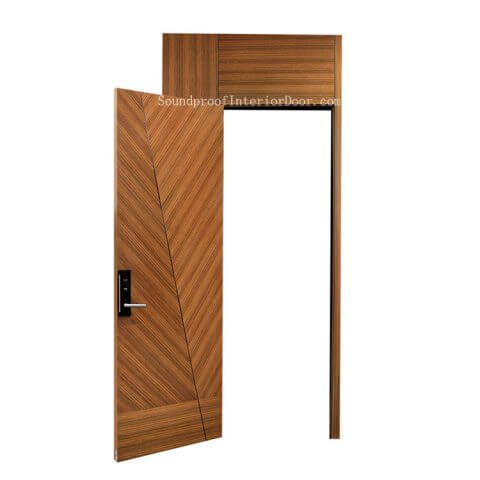Table of Contents
I. Introduction
II. Understanding Soundproofing
III. Assessing Your Door’s Soundproofing Needs
IV. Soundproofing Methods for Doors
A. Weatherstripping and Sealing
B. Adding Mass and Density
C. Reinforcing the Door with curtain
D. Upgrading to a Soundproof Door
V. Additional Tips for Soundproofing
VI. Conclusion
I. Introduction
Working from home has become more prevalent over time, and home offices provide the ideal setting to maximize productivity while limiting distractions. A crucial aspect of creating such an environment is how to sound proof a door for maximum productivity in workspace.
Answering that question is straightforward: noise can greatly impair your ability to focus on work and concentrate. From children playing in the living room, neighbor’s dog barking at you across the fence or household appliances making noise in general can all become obstacles in your productivity journey.
Research has demonstrated the negative consequences of even minor distractions on our ability to focus on tasks efficiently and stay on task. Noise pollution outside can disrupt our train of thought, leading to decreased concentration and increasing stress levels – how to make a door soundproof is one way of creating a quieter work environment and can help create more conducive working conditions.
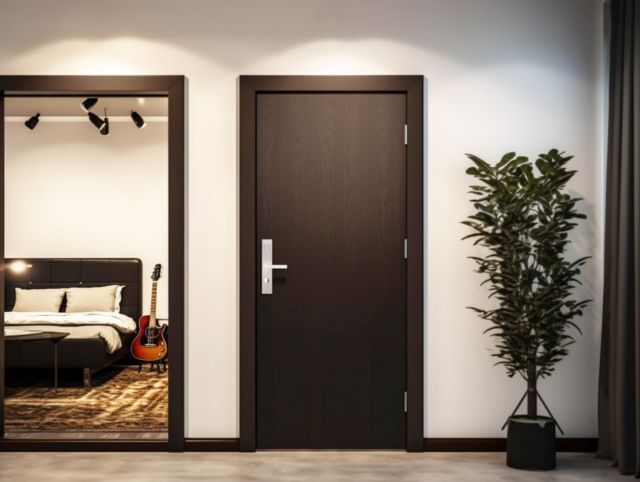
II. Understanding Soundproofing
Before we explore various methods on how to make doors soundproof, let’s first discuss what soundproofing entails and how sound travels through doors.
Soundproofing refers to the practice of reducing or eliminating the transmission of sound from one area to another. The objective is to form a barrier that keeps out sound waves, thus limiting how much noise enters or exits a room.
Home offices require sound proofing doors in order to create an environment free from external noise, where you can concentrate and be more productive. By effectively soundproofing the doors in your office space, soundproofing helps create a quieter, peaceful setting where work can get done more easily and productively.
How sound travels through doors and other common sources of noise
To understand how to make door soundproof, it is crucial to gain an understanding of soundwave travel and noise sources. Doors provide easy passage for sound waves due to their lightweight composition; this enables noise seepage through gaps, cracks and even into the material itself.
Common sources of noise that can seep into your home office include traffic sounds, construction noise, household appliances and conversations from elsewhere in your house. Such disturbances can make concentrating on work difficult or engaging in virtual meetings difficult.
Addressing vulnerabilities in your doors and using soundproofing techniques, you can significantly decrease the noise entering your home office space – creating a calmer and more serene working environment for yourself and others.

III. Assess Your Door’s Soundproofing Needs
Now that we know the significance of soundproof doors and how sound travels through them, let’s evaluate your current door’s soundproofing effectiveness and how to sound proof doors for your home office.
Before opening your door, inspect it closely for any visible gaps, cracks, or openings that could allow sound leakage through. Pay special attention to its edges, bottom, and the space between it and its frame as these areas often act as conduits of sound leakage.
Next, conduct a simple sound test. Step inside your home office with its door closed, observing any level of noise that still manages to sneak through; listen out for any conversations or external sounds coming through that you can clearly hear; if so, this may indicate additional soundproofing measures may be needed on its door.
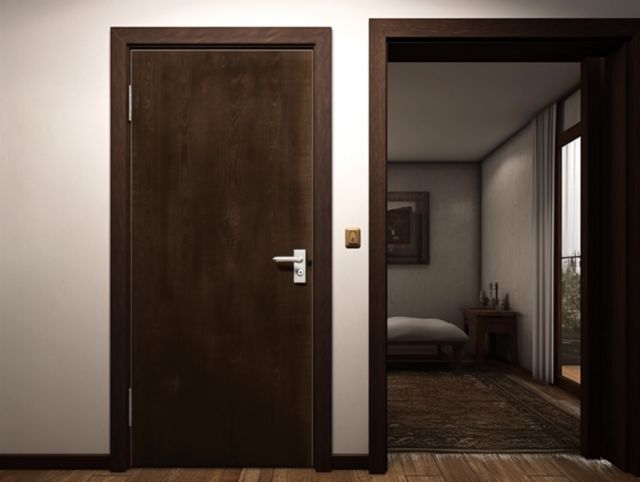
Factors to Keep in Mind when Determining Soundproofing Needs
Various considerations play a part in deciding how to sound proof door:
- Noise Level: Consider the typical noise levels in your surroundings before selecting soundproofing solutions. If you reside in a busy urban area or near a noisy street, more robust soundproofing solutions may be required than for someone living in a more serene neighborhood.
- Assess Your Needs: Take stock of what kind of soundproofing will best serve your work environment. If video conferences, phone calls or intense concentration is integral to your job duties, consider prioritizing greater soundproofing measures.
- Budget: Establish a realistic budget when setting out to soundproof your environment. Materials and professional installation fees vary significantly, making it important to create an affordable plan tailored specifically to your needs.
- Door Material: Different door materials possess differing degrees of soundproofing properties, such as wooden doors’ superior sound insulation properties over hollow core ones. It’s important to take note of which material your door is made of as this could impact how to block noise from door.
By taking into account these factors, you can better asses how to block sound from door. From small fixes to full overhauls, understanding your specific requirements will assist in selecting appropriate soundproofing methods.
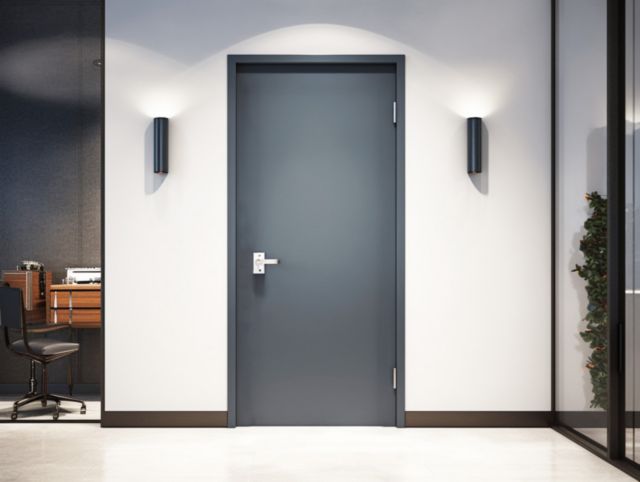
IV. Soundproofing Solutions for Doors
Now that we’ve assessed how to make a door sound proof, let’s discuss various strategies to soundproof it and minimize distractions in your home office.
Weatherstripping and Sealing
Sealing gaps and cracks is an efficient and economical way to soundproof your door, as this small openings allow soundwaves to easily pass through them. Therefore, it is imperative to address them.
Sealing gaps and cracks helps create an airtight seal, blocking sound waves from entering or leaving your home office. Not only will this reduce noise transmission but it will also increase energy efficiency by eliminating drafts.
Step-by-step instructions on how to noise proof a door
- Start by inspecting your door for any visible gaps or cracks.
- Measure the gaps and purchase weatherstripping materials suitable for your door. Common options include adhesive-backed foam tape, door sweeps, or door gaskets.
- Make sure your door surface is dry before applying weatherstripping material.
- Cut to size, attaching weatherstripping over any gaps and cracks along its length, covering gaps and cracks on door.
- To create a seal with floor, secure door sweeps to bottom of door at its base for optimal seal.
- Conduct a test to ensure the door provides a tight seal, and make any necessary modifications or alterations as required.
By properly weatherstripping and sealing your door, you can drastically decrease sound leakage into your home office, creating a more soundproof environment.
Calculating Mass and Density
How to make wooden door soundproof? Mass and density can also help improve soundproofing of doors by adding Mass Loaded Vinyl (MLV), which absorbs soundwaves.
MLV (Multi Layer Door Foam) is an elastic and dense material specifically developed to reduce noise transmission through doors. Easy to apply directly onto door surfaces, MLV helps absorb and dampen sound waves before they can pass through them into your living space.
Inform readers how to sound insulate a door with MLV or other dense materials such as rubber to doors
- Measure and purchase enough MLV or another dense soundproofing material to cover your door dimensions.
- Clean and ensure dry conditions exist on the surface of the door before purchasing an appropriate amount of soundproofing materials, like MLV.
- Cut MLV into shape according to its dimensions of your door with some overlap for optimal coverage.
- Apply adhesive to the back of the MLV and carefully press it onto the door surface, smoothing out any wrinkles or bubbles as you press.
- Trim any excess material to ensure a secure and tight fit.
By adding mass and density to your door, you can significantly enhance its soundproofing properties, leading to a quieter home office environment.
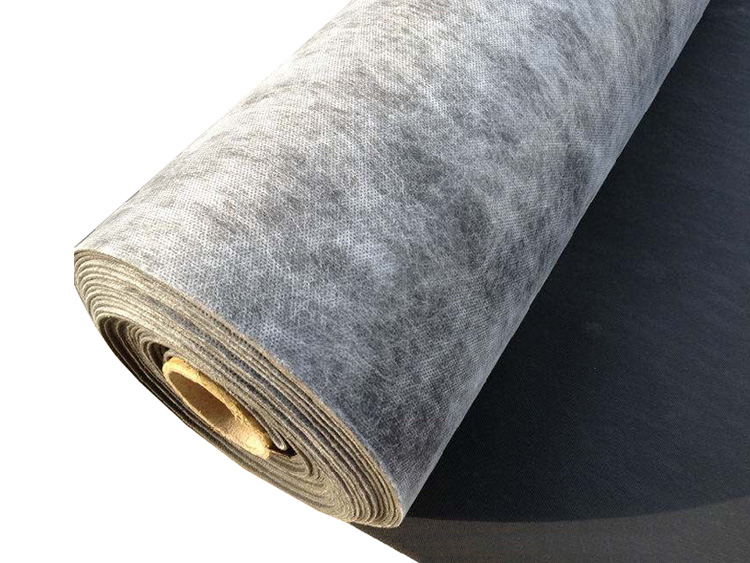
Reinforcing the Door with a Sound Blanket
How to sound proof a bedroom door? Additionally to filling gaps and adding mass, a sound blanket is another effective method on how to insulate a door for sound.
A sound blanket is a thick and heavy fabric designed to absorb and block sound waves, creating an additional barrier against noise transmission. By hanging one over your doorway, a sound blanket provides another form of noise reduction.
Instructions on how to seal a door for sound with sound blanket
- Determine the dimensions of your door and purchase an appropriate sound blanket.
- Install hooks or curtain rods above the door frame so you can hang the blanket from them.
- Make sure the sound blanket covers every part of the surface up to the floor level.
- Adjust the position and tightness of the sound blanket until a snug fit is obtained.
Sound blankets can provide an easy, temporary or semi-permanent solution to enhance soundproofing and reduce distractions in your home office.
Switching to a Soundproof Door
If your current door doesn’t offer adequate soundproofing or you want a long-term solution, investing in a soundproof door may be the ideal way forward.
Soundproof doors are purposely constructed to minimize noise transmission, making them ideal for home offices. Constructed using dense materials with multiple layers and special insulation materials that block sound effectively.
When purchasing a soundproof door, take into account factors like its Sound Transmission Class (STC) rating, material and installation requirements. Consult a professional to ensure proper selection and installation for optimal soundproofing performance.
Upgrade to a soundproof door for maximum noise suppression in your home office and create a peaceful, productive workspace environment.
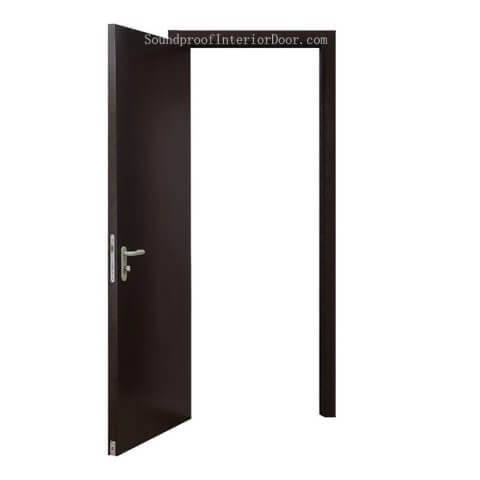
Wooden Soundproof Doors
Wooden Soundproof Doors Internal Sound Proof Wood Doors Wooden Acoustic Door
V. Additional Tips for Soundproofing
In addition to how to better soundproof a door, additional soundproofing measures exist for home office doors to further increase soundproofing capabilities.
1. Utilizing sound-absorbent materials in the office
Integrate sound-absorbing materials into your home office space for an acoustically more balanced atmosphere. Sound absorbing materials help reduce echo and reverberation, creating a more acoustically comfortable atmosphere.
- Place rugs or carpets on the floor to absorb sound vibrations.
- Use curtains or drapes made of thick, heavy fabric to help absorb sound waves.
- Install bookshelves or other furniture with soft surfaces that can act as sound absorbers.
By employing sound-absorbing materials, you can reduce sound reflections and foster a more relaxing and focused work environment.
2. How to Insulate Internal Doors by Rearranging Furniture or Installing Acoustic Panels
Furniture arrangement in your home office can also have an effect on soundproofing. Here are a few helpful suggestions:
- Position your desk away from the door to minimize direct sound transmission.
- Place bookshelves or other furniture against the walls to help absorb sound.
- Consider installing acoustic panels on the walls near the door to further dampen sound waves.
By strategically rearranging furniture and adding soundproof panels, you can optimize soundproofing of your home office space.
VI. Conclusion
How to make sound proof door is not what we are talking about. How to make an interior door soundproof is key to creating an efficient and distraction-free home office environment. By employing any one of the various soundproofing methods outlined here such as weatherstripping, adding mass and density, reinforcing with sound blankets, or upgrading to soundproof doors you can significantly decrease noise infiltration and increase focus while working.
Consider including additional soundproofing measures like sound-absorbing materials and furniture rearrangement as additional means of improving soundproofing in your home office. Even small adjustments can create an ideal work environment.
Keep in mind that having a peaceful workspace is essential to productivity and concentration. Take time to assess the soundproofing needs of your door and select methods and implement techniques tailored specifically for you.
Investment in soundproofing can help your productivity and well-being. Create an environment in which you can work without distractions or disruption.
Now is the time to take steps and employ these soundproofing techniques, enjoying the results in terms of a quieter and more productive home office environment.
